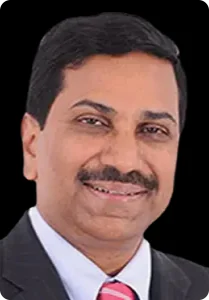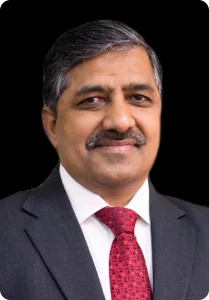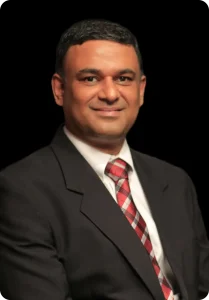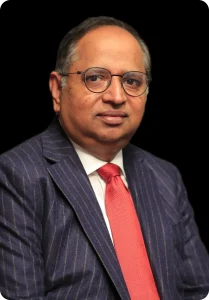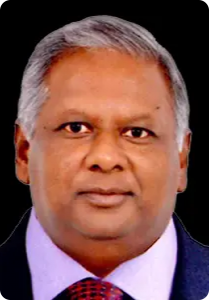Rs 900-crore LNG expansion and EV-ready stations aim to decarbonise India’s logistics.
Ultra Gas & Energy Ltd (UGEL) is investing Rs 900 crore to establish 100 LNG retail outlets across India, targeting high-density freight corridors and integrating EV charging infrastructure at every station—a first-of-its-kind initiative in the country. In this exclusive interview, Maqsood Shaikh, MD & CEO of UGEL, shares insights on the company’s strategic roadmap, the adoption of LNG among fleet operators, and how UGEL’s multi-fuel model supports India’s decarbonisation and clean mobility goals.
UGEL has embarked on a Rs 900 crore expansion plan to set up 100 LNG retail outlets across India. Could you elaborate on the strategic roadmap behind this scale-up and how you plan to prioritise location selection across states?
UGEL Rs 900-crore expansion to build 100 LNG retail outlets is guided by a corridor-first strategy, prioritising high-density freight routes such as the Golden Quadrilateral, DMIC and NH44/48. Locations are selected using a multi-parameter scoring model covering freight demand, proximity to LNG terminals, regulatory readiness, land availability and assured customer off-take.
The rollout follows a phased state-wise plan, beginning with Gujarat, Maharashtra, Karnataka, Rajasthan, Tamil Nadu and Haryana, supported by reliable LNG sourcing, mother stations, and PESO-ready standard designs. This ensures stations are built where logistics demand, supply chain efficiency and safety compliance deliver the strongest early returns. Our next phase will expand to cover states like Haryana, Odisha, Jharkhand, Chhattisgarh, and Andhra Pradesh, with Visakhapatnam going forward. The idea is to connect the east–west and north–south freight corridors while filling gaps in high-traffic routes and industrial clusters.
Ultra Gas & Energy is integrating EV charging infrastructure at all LNG stations—a first-of-its-kind initiative in the country. How does this multi-fuel model align with India’s decarbonisation and mobility goals?
UGEL has designed every LNG retail outlet to be EV-ready from day one because the future of mobility in India will be multi-fuel, not single-technology. Each station includes a dedicated EV bay that can be activated as a fast-charging point or battery-swap module within 30 days, making this the first integrated LNG–EV retail network in the country.
This model directly supports India’s decarbonisation pathway: LNG already cuts emissions by ~30 per cent compared to diesel for long-haul transport, while EVs enable zero-tailpipe emissions for shorter routes. By co-locating both solutions, we create a practical and scalable transition pathway for fleet operators. A single station can reduce up to 66,000 tonnes of CO₂ annually, and the full network can help avoid over 1 million tonnes of CO₂—aligning Ultra Gas & Energy’s growth with national clean mobility targets.
What trends are you observing in LNG adoption among fleet operators and long-haul logistics companies?
We’re seeing a clear shift in sentiment among fleet operators and logistics companies towards LNG, driven by environmental considerations. Earlier, adoption was slow due to limited infrastructure and vehicle availability, but that’s changing rapidly.
Our partnership with GreenLine, which is targeting a fleet of 10,000 LNG trucks, has provided a strong demand base. This early adoption is helping demonstrate the reliability of LNG for long-haul operations. As more players are introducing LNG-powered trucks, awareness and confidence in the fuel are growing.
How is the Rs 900 crore investment being distributed between retail infrastructure, logistics, and technology? What efficiencies are you aiming to achieve in supply chain and refuelling operations?
The majority of the Rs 900 crore investment is allocated toward developing the retail infrastructure, our LNG stations – each costing around Rs 9 crore to build. We’ve completed six stations with an investment of Rs 54 crore for which the cost of technology is built-in within the capex towards logistics and LNG supply reliability to our retail outlets.
We aim at OTIF i.e. On Time and In Full, with a focus on operational efficiency, ensuring minimal downtime, assured availability, and standardised processes across locations. Each station is designed for 24×7 operations with turnaround times under 15 minutes, significantly improving fleet uptime. This model not only streamlines the supply chain but also builds trust with operators who rely on consistent refuelling access along key freight corridors.
How is digital technology being leveraged across UGEL’s LNG network for monitoring, predictive maintenance, and enhancing customer experience at the pump level?
Digitalisation is central to how we operate and scale our LNG network. We’re investing in digital monitoring systems; the real-time fuel engine connects to IoT devices to make the most effective use of energy consumption at customer premises and monitor the availability of fuel using ML with an endeavour in training the data for AI decision-making for initiating reorders and monitoring delivery for LNG on a real-time basis.
Various parameters are monitored with local SCADA and the same is made available on a console at a central command centre. The operators are equipped with a handheld console for preparedness of the cryogenic process of the retail outlet, wherein an early action starts based on the prediction of the arrival of potential trucks for refuelling in 15 min or 30-minute arrival window.
Your expansion focus includes energy-intensive states such as Gujarat, Tamil Nadu, and Maharashtra. What kind of partnerships—public or private—are you pursuing to strengthen the rollout in these regions?
We are pursuing a balanced mix of public and private partnerships to accelerate our rollout in energy-intensive states such as Gujarat, Tamil Nadu, and Maharashtra. On the public side, UGEL has established strategic collaborations with leading PSUs Indian Oil Corporation (IOCL), GAIL (India) Ltd, and Hindustan Petroleum Corporation Ltd (HPCL) to secure access to major LNG terminals and ensure a dependable fuel supply, which is essential for scaling our infrastructure in these regions.
In parallel, we are working with private sector partners through our Rs 900 crore investment to establish a network of 100 LNG retail outlets across the country. A significant portion of these outlets will be located in industrial and logistics hubs within Gujarat, Tamil Nadu, and Maharashtra. Through these collaborations, we aim to play a key role in decarbonising logistics, advancing sustainable mobility, and accelerating the transition of India’s commercial fleets from diesel to LNG.
Could you share measurable data or targets on how LNG and Bio-LNG adoption through your network will help reduce emissions in the commercial transport sector?
Through our growing network of LNG refuelling stations, we are enabling up to 30 per cent lower CO₂ emissions compared to diesel for long-haul freight vehicles. With the planned integration of Bio-LNG in our dual-tank system, we are creating a clear pathway toward carbon-neutral and eventually carbon-negative transport operations. As our network expands nationwide, this transition is expected to help India’s commercial transport sector cut millions of tonnes of CO₂ annually, while improving fuel efficiency and sustainability across logistics fleets.
UGEL portfolio includes Bio-LNG, CBG, and CBM. How do these alternative fuels fit into your long-term energy strategy and what synergies exist between them?
While we are not currently diversifying into Bio-LNG, compressed biogas (CBG), or coal bed methane (CBM) immediately due to limited technology, near-monopoly regulations for the distribution of Natural Gas and feedstock availability for the case of biogas, i.e. CBG or Bio-LNG; however, our infrastructure is designed for future integration.
The two-tank system at our LNG stations allows seamless adoption of Bio-LNG as supply scales up, creating synergies with CBG and CBM ecosystems. Over time, these fuels will form part of our broader clean energy mix, complementing LNG to enable a smooth transition toward carbon-neutral or carbon-negative operations while reducing dependence on fossil fuels.
What specific policy interventions or incentives from the government would further accelerate LNG infrastructure growth and clean fuel adoption in India?
A study by one of leading Energy Institute indicates that the broader transport sector accounts for ~14 per cent of India’s total greenhouse gas emissions and that heavy-duty trucking, i.e., freight transport, uses over 40 per cent of the transport sector’s final energy. Though it’s a major contributor, it also represents a significant opportunity for clean fuel adoption.
To accelerate LNG infrastructure growth and the transition to cleaner fuels, the government could implement targeted policy interventions and incentives such as providing capital subsidies or tax breaks for LNG station development, easing regulatory approvals for new infrastructure, offering financial incentives or lower interest loans to fleet operators adopting LNG vehicles, supporting public-private partnerships for network expansion, and introducing carbon credit mechanisms to make clean fuels more economically competitive. Such measures would catalyse investment, reduce costs, and drive faster adoption of low-emission transport solutions across India.
How do you envision UGEL’s role in shaping India’s clean mobility landscape over the next decade—especially as hydrogen and renewable gas gain traction?
Over the next decade, UGEL envisions itself as a key enabler of India’s clean mobility transition by expanding access to economically viable, low-emission fuels. While green, blue, or black hydrogen is currently too expensive to replace Diesel at scale, our focus is on promoting LNG and, in future Bio-LNG, which offer immediate emissions reductions and are affordable for consumers. By scaling our LNG and renewable gas infrastructure, we aim to accelerate the adoption of cleaner transport solutions while preparing the groundwork for future integration of hydrogen as costs become more feasible.
Source: ManufacturingToday


















